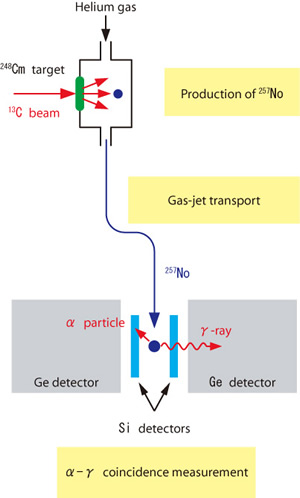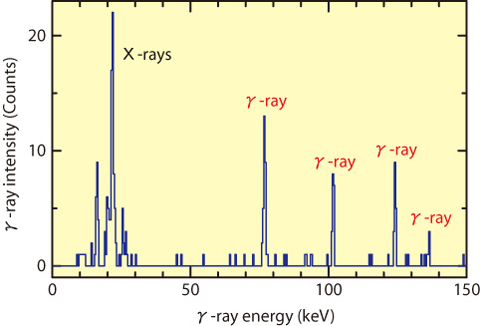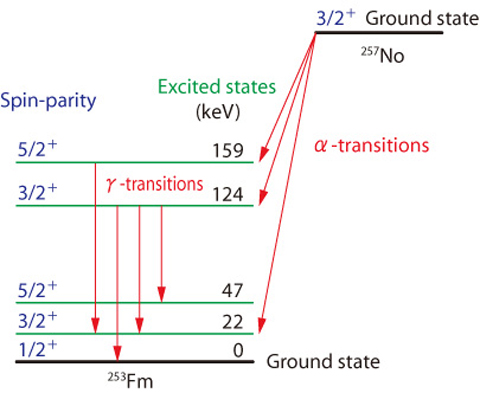
Fig.6-5 Production of 257No and α-γ coincidence measurement

Fig.6-6 γ-ray spectrum of 257No

Fig.6-7 Quantum states in 257No and 253Fm
The very heavy nuclei containing more than 100 protons are called "superheavy nuclei". The superheavy nuclei are very unstable because of Coulomb repulsion among the many protons. Thus, they cannot exist without an additional stabilizing effect that originates from nuclear shell structure. How heavy nuclei can exist? How stable are they? The answers strongly depend on the shell structure of superheavy nuclei.
Since the production of superheavy nuclei is extremely difficult, the discovery of the superheavy nuclei was the first aim in previous studies. However, beyond this, if excited states of superheavy nuclei are investigated in detail, the shell structure of superheavy nuclei can directly be clarified. In this work, we have successfully measured γ-rays from the α decay of nobelium-257 (257No), an isotope of the 102 nd element, and investigated its quantum level structure. This is the first detailed spectroscopic study of superheavy nuclei.
The 257No nuclei were produced by bombarding a curium-248 (248Cm) target with a carbon-13 (13C) beam accelerated by the JAEA Tandem Accelerator. The 257No nucleus decays with an α-particle emission with a half-life of 25 s, and its α-particles and accompanying γ-rays were measured with high efficiency (Fig.6-5). In previous studies for superheavy nuclei, only a few or at most 100 f?-particles could be detected. In this study, we have detected 5000 α-particles of 257No and observed 4 γ-transitions in coincidence with these α-particles (Fig.6-6). As a result, excited states of the daughter nucleus fermium-253 (253Fm) have been established as shown in Fig.6-7, and spin-parities of the ground state of 257No as well as the excited states of 253Fm have been identified for the first time.
This is the first successful γ-ray measurement and first spin-parity assignment for such heavy nuclei. The present result revealed that the spin-parity of the ground state of 257No is different from that expected. The experimental identification of quantum states in superheavy nuclei enables us to test the validity of various theoretical calculations. This is a great advance in elucidating the shell structure of superheavy nuclei.